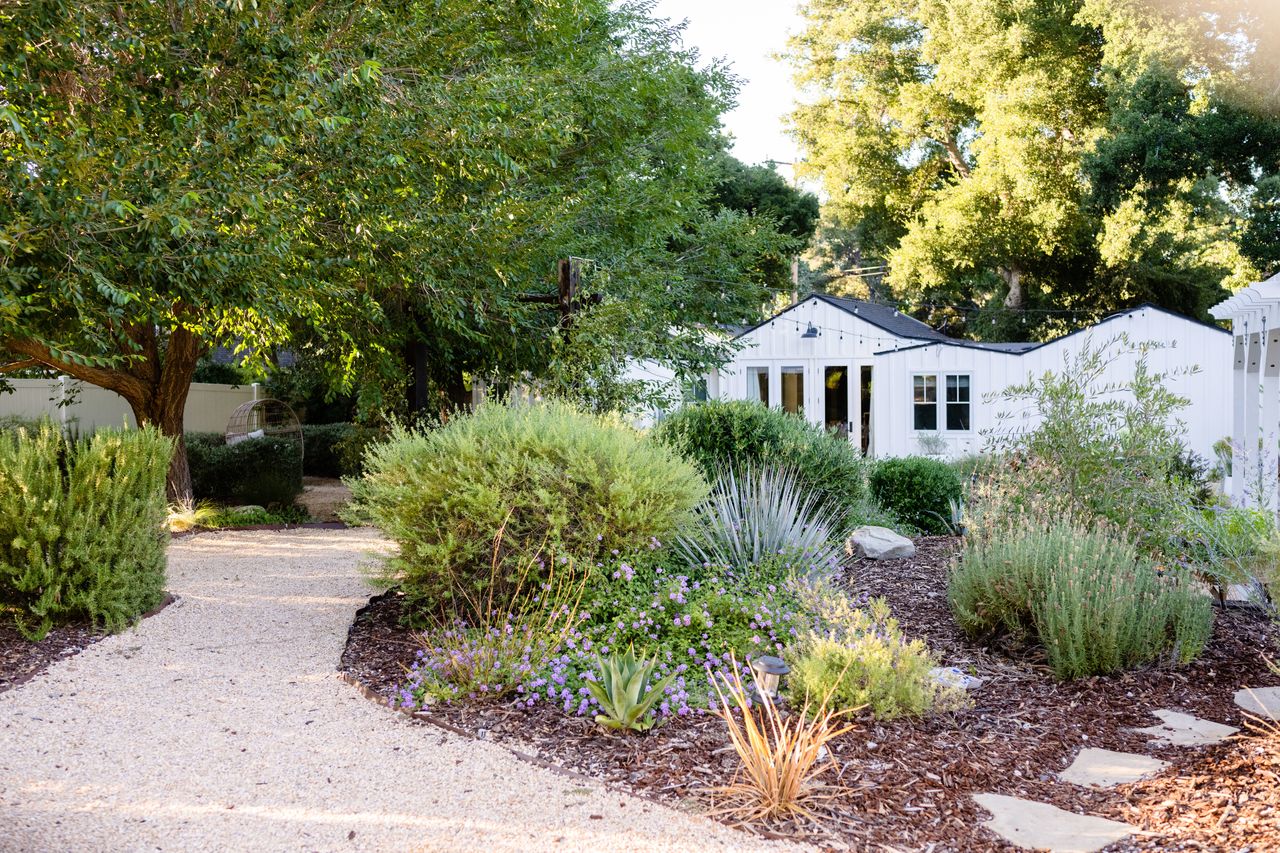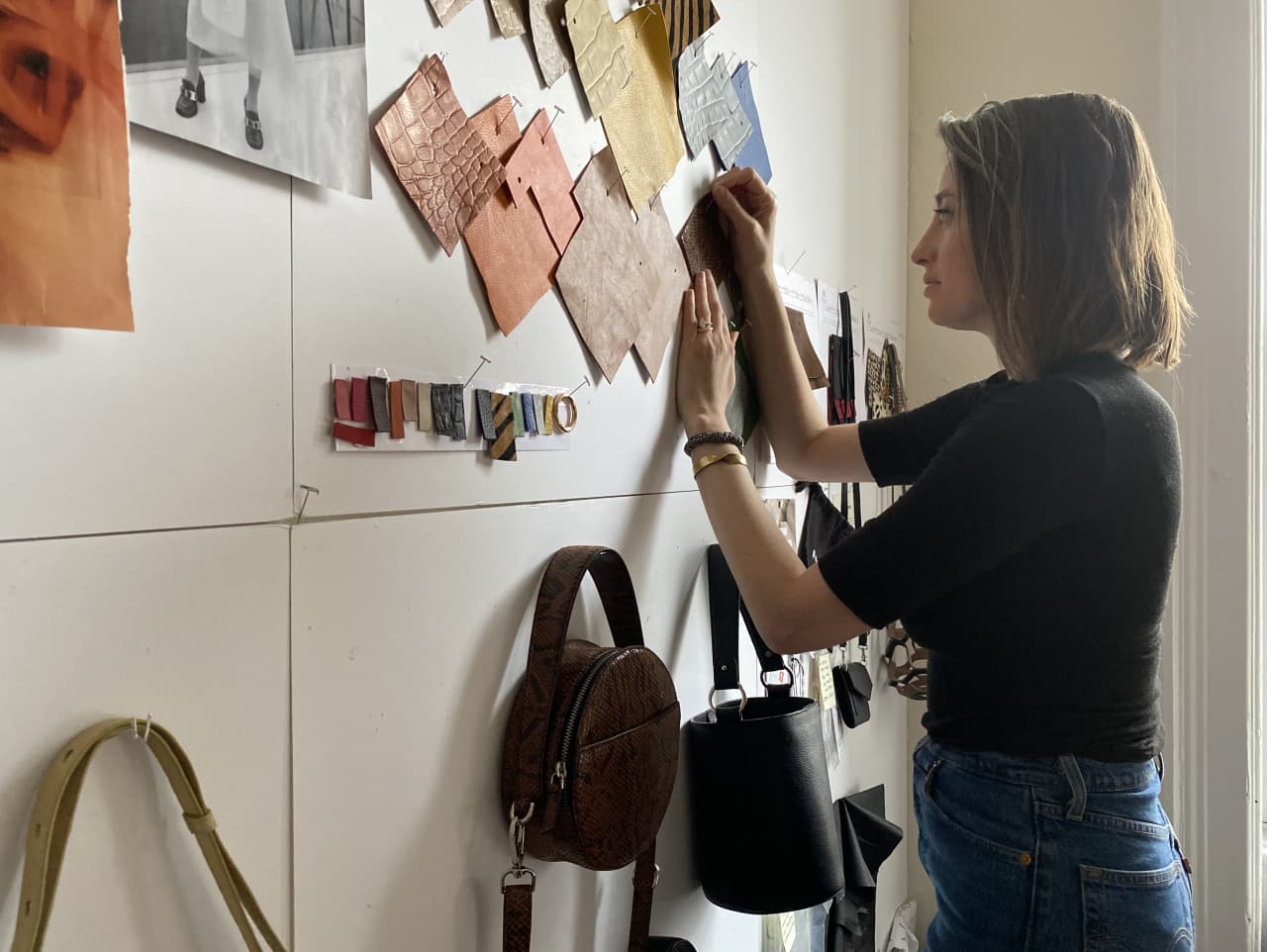Meet the Homeowners Spending Tens of Thousands to Let Their Lawns Go Wild
A growing number of people across the U.S. are ditching manicured grass for native plants and trees
Within Denver’s Washington Park neighbourhood, an enclave south of downtown where the median house listing price is just over $2 million, quintessential manicured American lawns roll out in front of historic brick bungalows, restored Victorians and contemporary new builds. Then there is Lisa Negri’s yard, which sits adjacent to her three-bedroom, two-bathroom bungalow where she’s lived since 2012.
“It looks like nature,” says Negri, 66, a retired engineer.
Roughly 50,000 plants comprising 92 species engulf her 0.14-acre lot, which until 2020 sported green lawn grass. She estimates the yard has cost roughly $75,000 for plants, bulbs, seeds and hardscaping. Negri’s creation, designed by Denver Botanic Gardens assistant curator of horticulture Kevin Philip Williams, rejects the time-honoured status symbol of a tidy lawn in favour of a new luxury: the rewilded yard.
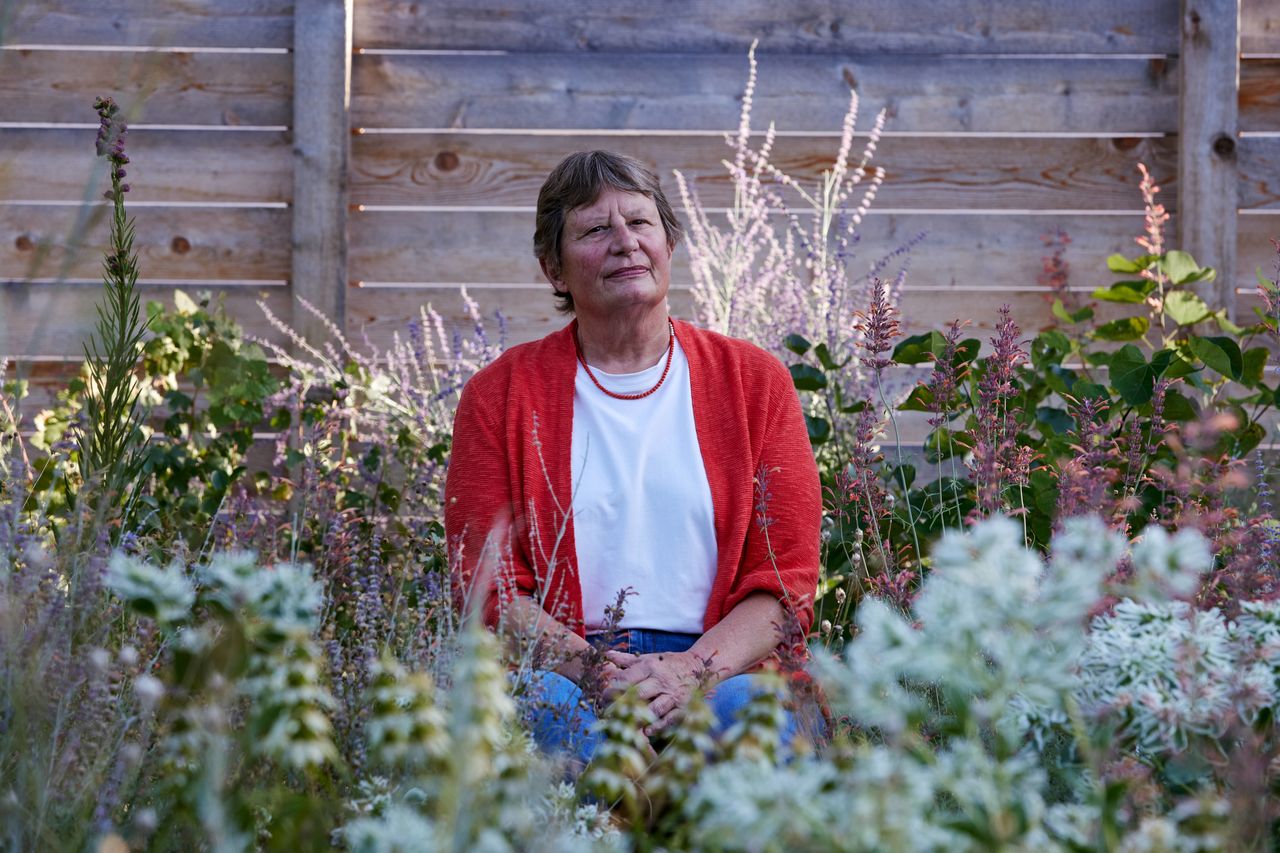
“Rewilding is returning land to a more natural state,” says Allison Messner, co-founder and CEO of Yardzen, a landscape design company with clients nationwide. Rewilding a yard typically involves introducing regionally appropriate plants, also called native plants, and fostering habitats for local wildlife. People come to the practice for myriad reasons. Some people want to support pollinators; some want to avoid water-guzzlers; others want to signal they are climate conscious. But the overarching purpose is universal: to encourage the flourishing of natural ecosystems and to mitigate the effects of habitat loss and climate change.
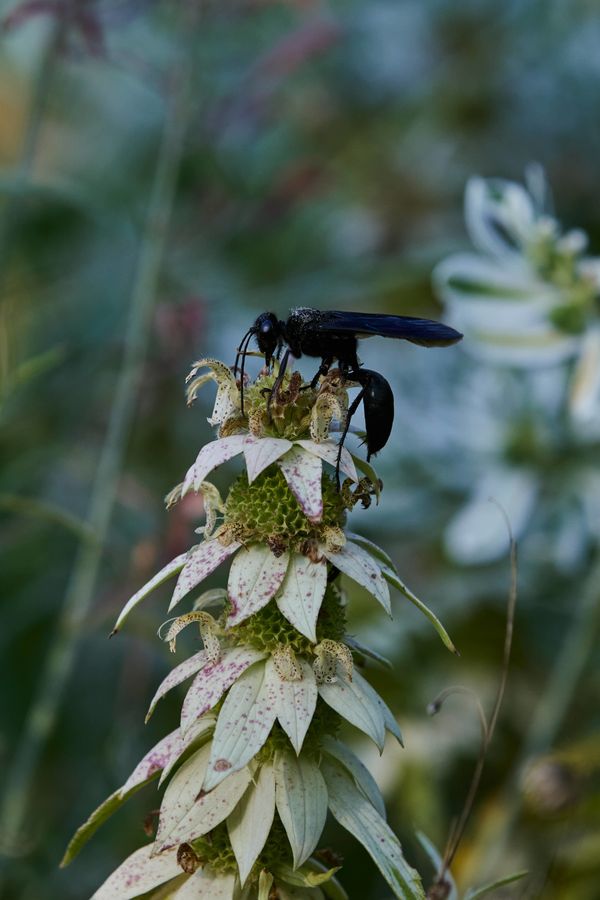
In Negri’s yard, this means interweaving prairie grasses and southwestern shrubs commingle with pockets of bulbs, wildflowers and succulents, all chosen to thrive in Denver’s climate, which is warm and dry in the summer and harsh in the winter, and has fierce year-round sun because of the altitude. Plants also specifically open the door to animals, insects, fungi and bacteria.
The space is one big meshed movement that throughout the year waxes and wanes in colour, height, shape and texture. A low-slung, post-winter skeletal brown becomes spring’s sprouting rainbow of lush hues, which gives way to summer’s 8-foot, reach-for-the-sky feathery silvers and waxy blues before fall’s explosion of radioactive yellows and Martian reds take hold for a last gasp as winter’s white waits in the wings.
A total of 9,000 plants and bulbs were planted in 2020, largely with help from neighbours and friends. Since then, Negri has planted fewer than 1,000 new plants but has added a large number of seeds. It took a year of significant watering to get roots established. Now the only substantial maintenance required is cutting the yard to the ground in the spring and watering two to three times a year.
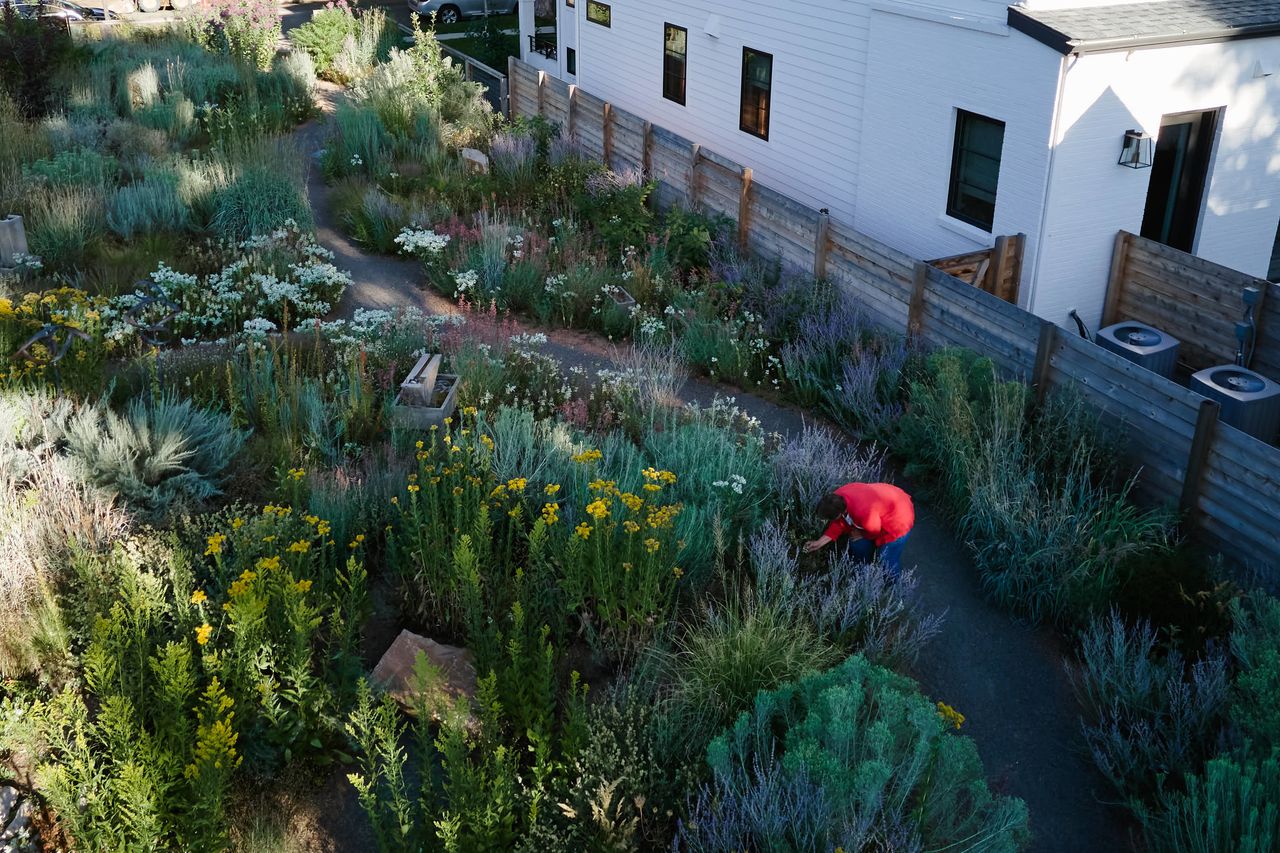
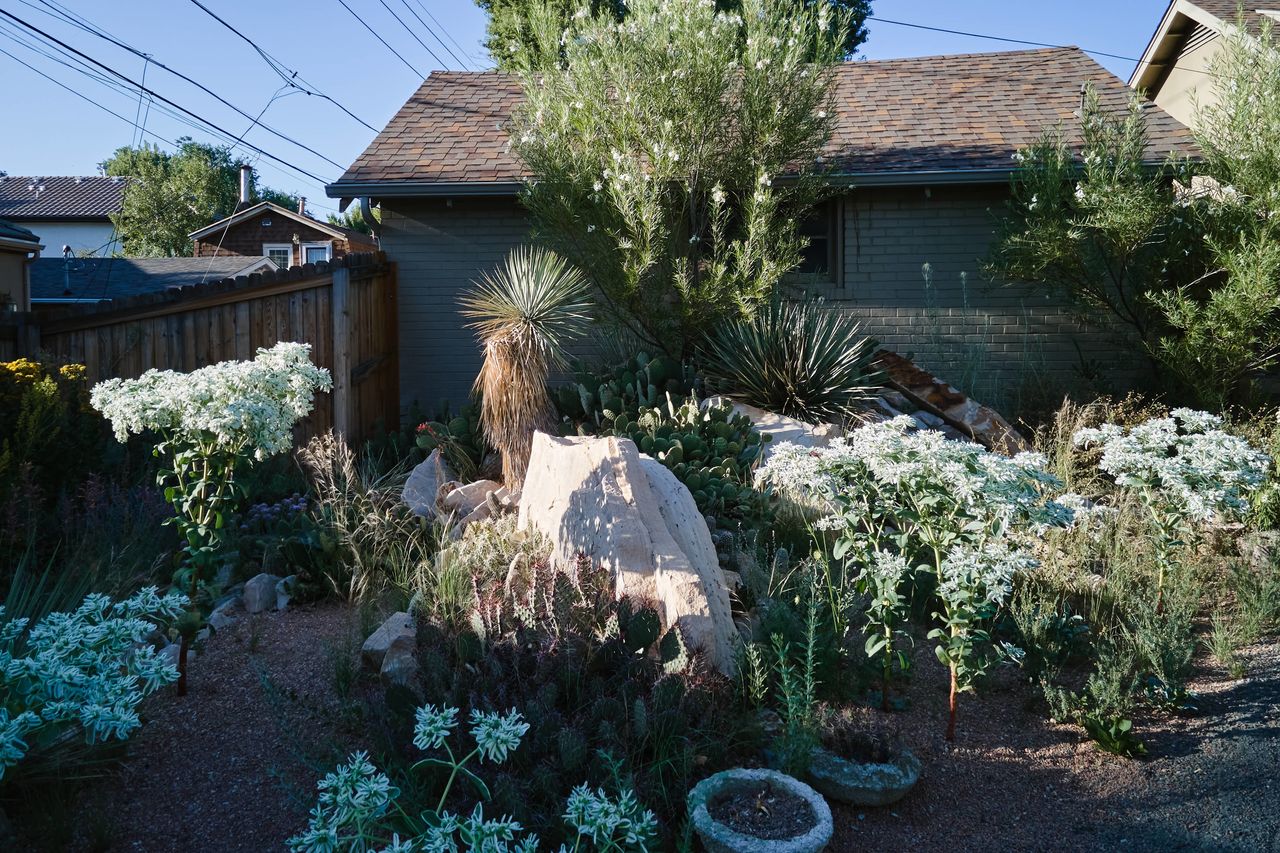
“A niche group of people has supported yard rewilding over the past decade or so, but recently it’s become much more mainstream,” Messner says. In 2022, Yardzen saw a 66% year-to-year increase in clients replacing green lawn grass with fully rewilded yards. “We’re not seeing thousands of people say, ‘Tear out my lawn and put in a rewilded yard,’ ” she says, but the majority of Yardzen’s clients are rewilding in some capacity. Last year, 90% of new Yardzen clients installed some type of native plants. “Things are moving in this direction,” she says.
Rewilded yards look different depending on climate and topography. In general, however, they support the web of life from below the ground up to the canopy, and every ecological layer in between, says Melissa Marie Wilson, CEO of Mill Valley, Calif.-based landscape firm Want Green Gardens. Lawns are nonexistent or minimized with native grasses. Plants bloom throughout the seasons. Native trees anchor the yard and provide wildlife with food and year-round shelter.
Eden Passante, 38, and Zan Passante, 47, worked with Yardzen to rewild their half-acre lot about 30 miles northwest of Los Angeles in the ranch community of Newhall, Calif. They purchased the property in 2016 for $560,000 and spent $400,000 gut-renovating their space, which totals 2,100 square feet and has three bedrooms, three bathrooms and a guesthouse. They estimate they have spent $65,000 on rewilding. Plants cost about $10,000; hardscaping cost the most. The bulk of the designing and planting took five months.
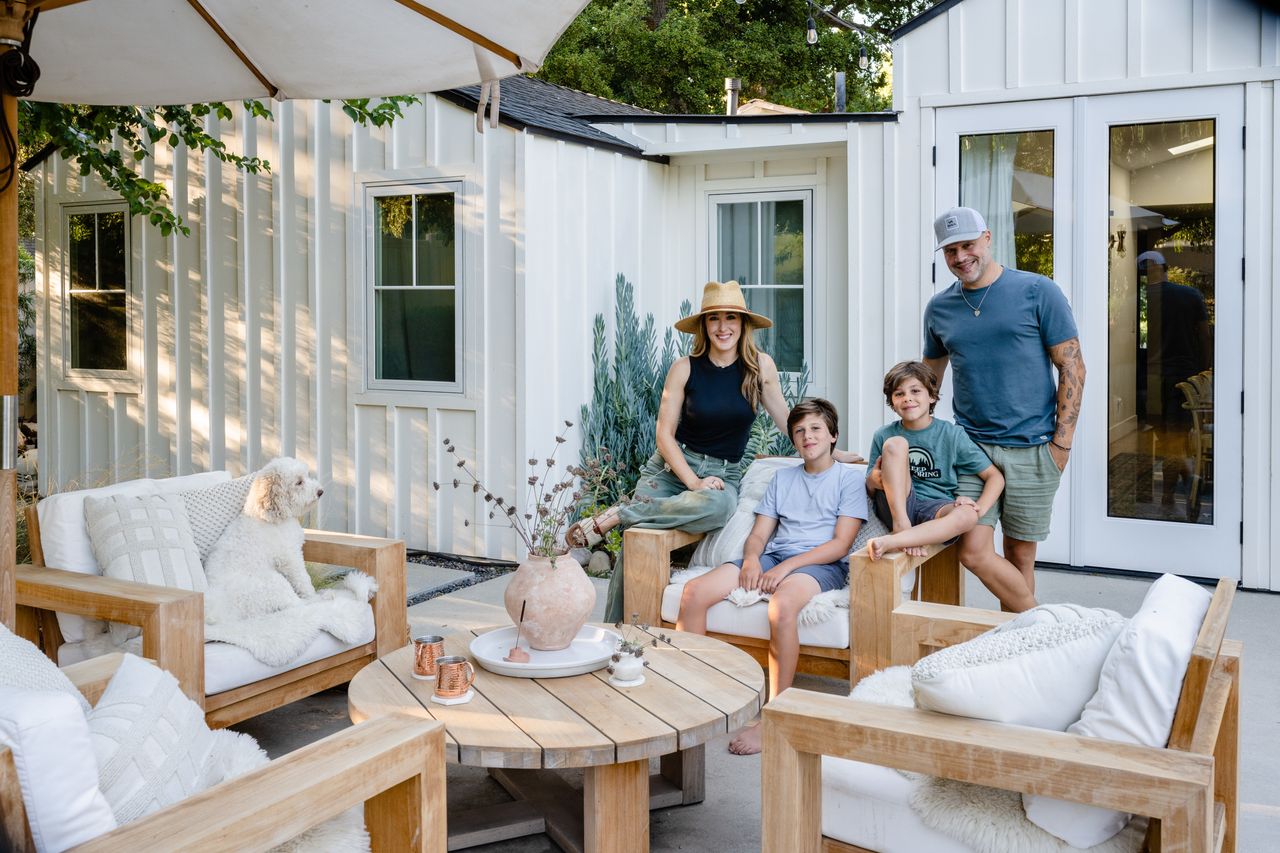
Today, the grassless yard is filled with whimsical flowers and succulents, such as blue chalksticks and large blue agaves. Gravel pathways lead to sitting and dining areas and a fire pit. There are garden beds for vegetables and edible flowers and a separate herb garden for mint, thyme, oregano and pineapple sage. A citrus grove has a Eureka lemon tree, a Meyer lemon tree, a yellow grapefruit tree, a lime tree and an orange tree.
“They are half native plants but all of the plants are drought-tolerant and zoned for this area,” says Eden Passante, who is the CEO of the home-entertaining website Sugar and Charm. Wildlife is active in the yard. A partridge laid 12 eggs under a bush. Pollinators love the blooming citrus trees.
The yard is low maintenance. “I try to let nature do its thing, but I remove any invasive weeds and keep the pathways nice,” she says. “The only difficulty is keeping the dust, rocks and pebbles out of the house.” Sometimes she wishes there was a soft play surface for her two young children.
Emily Murphy, an ethnobotanist with a background in ecology and environmental science and author of the regenerative gardening book Grow Now, says it is easy to get in the weeds with rewilding terminology. “It’s evolving in real time,” she says, noting that the word rewilding sprung up in conservation biology and ecology circles in the 1990s in reference to large-scale efforts to restore biodiversity and improve the integrity of landscape and natural systems.
Murphy says that rewilding a yard will obviously look very different from rewilding, say, a National Park. “Purists would say—and there is always a purist—that your yard can’t be compared to the reintroduction of wolves in Yellowstone.” But she believes that rewilded yards do contribute to the greater good. “Once you plant native plants, biodiversity will come,” she says, giving the example of a native oak tree, which can support roughly 2,300 species of animals and insects. In comparison, a non-native Chinese ginkgo has been documented to support five or fewer local species.
Jennifer Ehlert, vice president of landscape design firm Metro Blooms Design+Build in Minneapolis, says rewilding costs roughly the same as other landscaping. “A DIY pollinator patch might be in the hundreds,” she says. “Hiring a landscaping company to design and build some portion of a rewilded yard might be in the thousands. Rewilding your whole yard might be in the tens of thousands. If you’re into the hundreds of thousands, you have a huge property or you’re hardscaping as part of a bigger project.”
Dan Dufficy, founder of Mill Valley, Calif.-based California Native Landscapes nursery, encourages clients to start small. “Customers aren’t used to seeing these plants,” he says. “Their friends aren’t used to seeing these plants. They have no idea what the maturity of the product looks like.” To help clients get excited, he uses his hands to animate what plants look like and he uses vivid, educational language.
Not everyone is excited about yard rewilding. Homeowner associations can have landscape aesthetic rules. People who are allergic to bees have legitimate concerns. And then there are neighbours who just don’t get it.
Her first summer of rewilding, Lisa Negri in Denver received a cease-and-desist order from the city, which closed her down for eight months. “A neighbour called the city on me and said, ‘We don’t know what this person is doing. We’re afraid of it,’ ” Negri says. With the help of her garden designer and several horticulturists, she put together a 90-page presentation and ultimately received an open space conservation zoning designation, which is one of several types of conservation-related protections homeowners could pursue locally. Some cities—such as Austin, Texas, Evanston, Ill., and Green Bay, Wisc.—have passed ordinances in support of wildlife-friendly homeowners. This is also happening at the state level. In Minnesota, for example, a new state law bans cities from limiting managed natural landscapes.
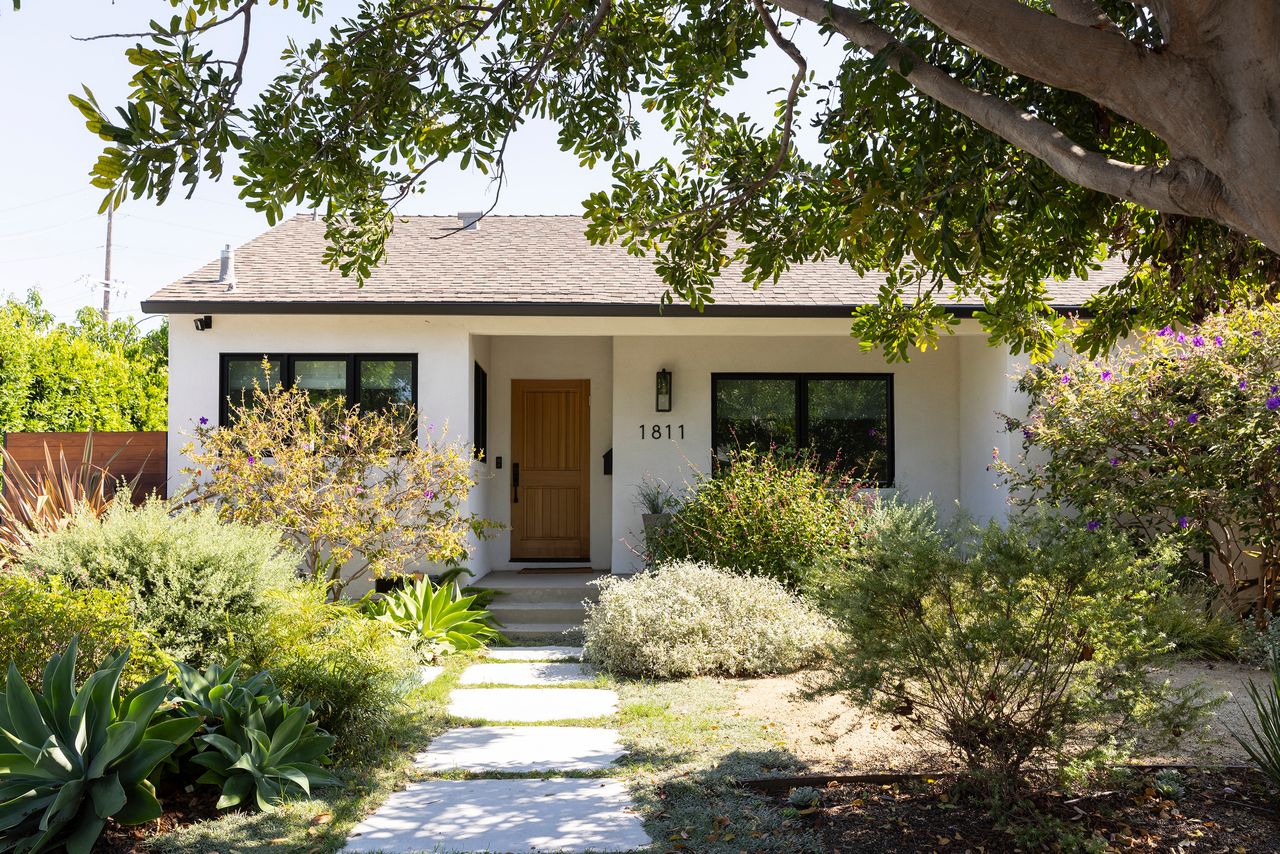
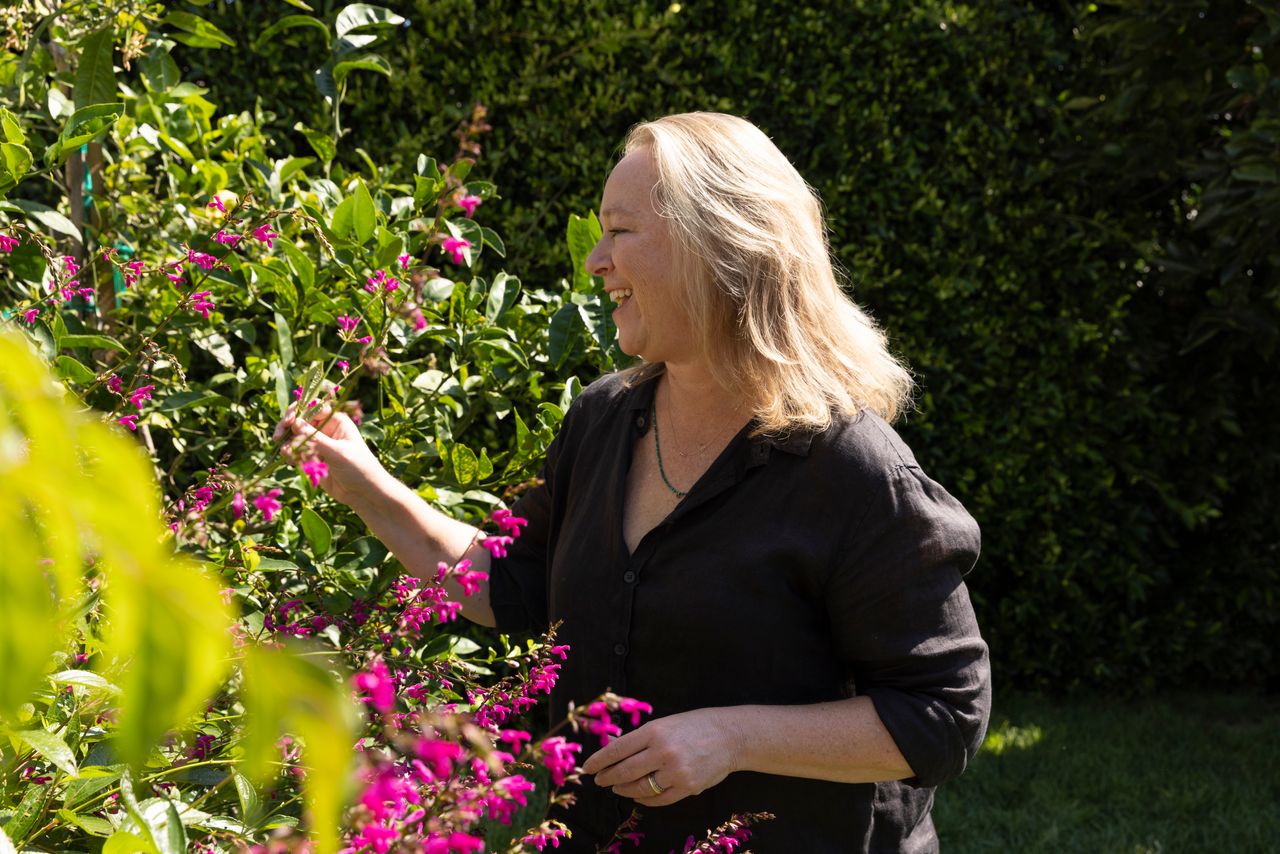
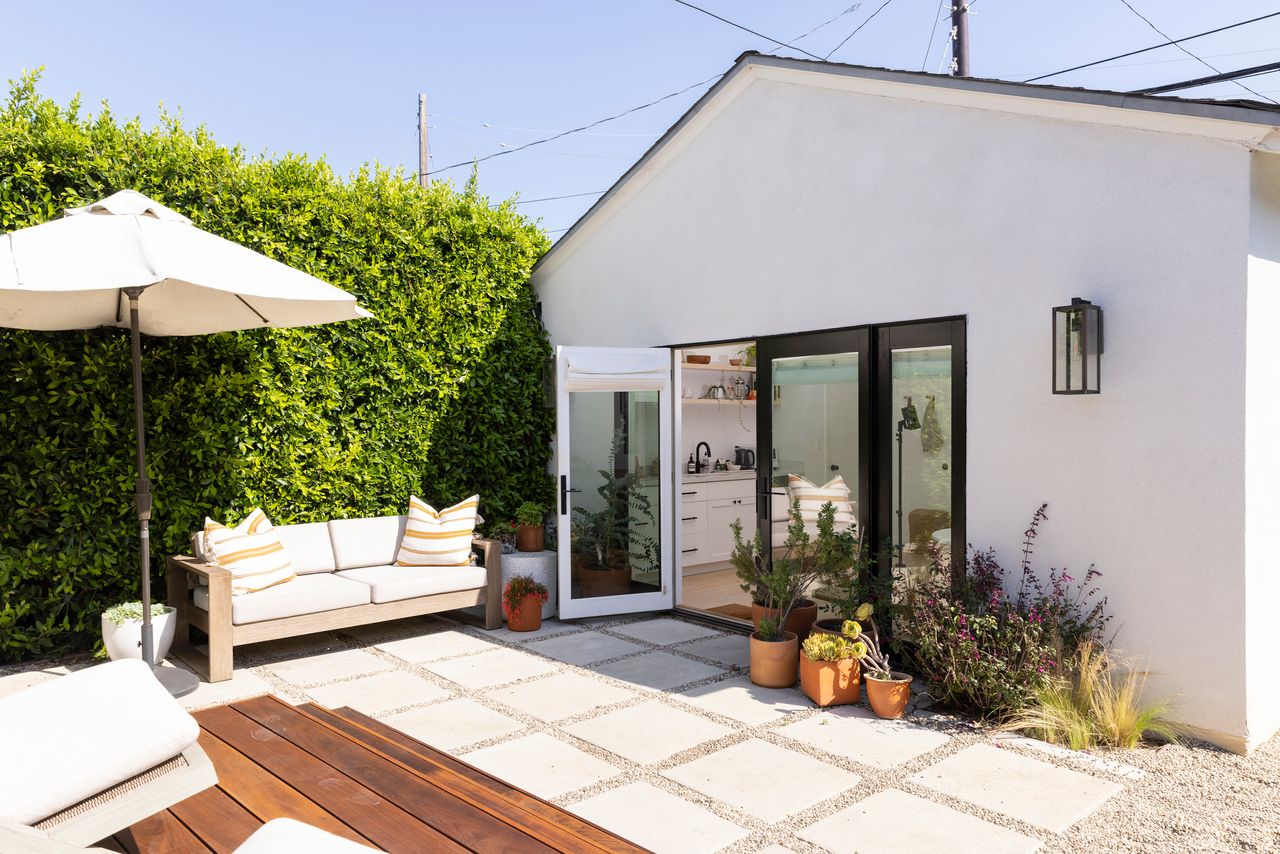
In Santa Monica, Calif., Roshanna Baron is having an opposite problem: Neighbours are copying her 0.13-acre rewilded yard. She and her husband, Nir Einhorn, 48, bought their house for $1.1 million in 2017. The couple received a landscaping blank slate when their yard was torn up during a nine-month renovation of their home, which has three bedrooms and two bathrooms, and totals 2,220 square feet, including their short-term rental guesthouse.
Planning their fully rewilded yard lasted about a month. Buying and installing $4,000 worth of plants took about two weekends with the help of a gardener. At first the landscaping felt empty, but after a year it was grown in. Three years later, the yard is colourful and warm with green- and blue-tinted plants, flowering succulents and a Meyer lemon tree. They kept a 75-year-old persimmon tree, the fruit of which keeps getting better as the yard’s soil improves.
“I’ve been stopped several times from husbands or wives saying they are planning on copying our yard,” says Roshanna Baron, 51, who works in entertainment industry talent relations and event planning. “One specifically told me he was copying everything because his wife loved it so much. A stranger parked in front of our home to tell me they aspire to have a yard like this.”
 Copyright 2020, Dow Jones & Company, Inc. All Rights Reserved Worldwide. LEARN MORE
Copyright 2020, Dow Jones & Company, Inc. All Rights Reserved Worldwide. LEARN MORE
This stylish family home combines a classic palette and finishes with a flexible floorplan
Just 55 minutes from Sydney, make this your creative getaway located in the majestic Hawkesbury region.
As Paris makes its final preparations for the Olympic games, its residents are busy with their own—packing their suitcases, confirming their reservations, and getting out of town.
Worried about the hordes of crowds and overall chaos the Olympics could bring, Parisians are fleeing the city in droves and inundating resort cities around the country. Hotels and holiday rentals in some of France’s most popular vacation destinations—from the French Riviera in the south to the beaches of Normandy in the north—say they are expecting massive crowds this year in advance of the Olympics. The games will run from July 26-Aug. 1.
“It’s already a major holiday season for us, and beyond that, we have the Olympics,” says Stéphane Personeni, general manager of the Lily of the Valley hotel in Saint Tropez. “People began booking early this year.”
Personeni’s hotel typically has no issues filling its rooms each summer—by May of each year, the luxury hotel typically finds itself completely booked out for the months of July and August. But this year, the 53-room hotel began filling up for summer reservations in February.
“We told our regular guests that everything—hotels, apartments, villas—are going to be hard to find this summer,” Personeni says. His neighbours around Saint Tropez say they’re similarly booked up.
As of March, the online marketplace Gens de Confiance (“Trusted People”), saw a 50% increase in reservations from Parisians seeking vacation rentals outside the capital during the Olympics.
Already, August is a popular vacation time for the French. With a minimum of five weeks of vacation mandated by law, many decide to take the entire month off, renting out villas in beachside destinations for longer periods.
But beyond the typical August travel, the Olympics are having a real impact, says Bertille Marchal, a spokesperson for Gens de Confiance.
“We’ve seen nearly three times more reservations for the dates of the Olympics than the following two weeks,” Marchal says. “The increase is definitely linked to the Olympic Games.”

Getty Images
According to the site, the most sought-out vacation destinations are Morbihan and Loire-Atlantique, a seaside region in the northwest; le Var, a coastal area within the southeast of France along the Côte d’Azur; and the island of Corsica in the Mediterranean.
Meanwhile, the Olympics haven’t necessarily been a boon to foreign tourism in the country. Many tourists who might have otherwise come to France are avoiding it this year in favour of other European capitals. In Paris, demand for stays at high-end hotels has collapsed, with bookings down 50% in July compared to last year, according to UMIH Prestige, which represents hotels charging at least €800 ($865) a night for rooms.
Earlier this year, high-end restaurants and concierges said the Olympics might even be an opportunity to score a hard-get-seat at the city’s fine dining.
In the Occitanie region in southwest France, the overall number of reservations this summer hasn’t changed much from last year, says Vincent Gare, president of the regional tourism committee there.
“But looking further at the numbers, we do see an increase in the clientele coming from the Paris region,” Gare told Le Figaro, noting that the increase in reservations has fallen directly on the dates of the Olympic games.
Michel Barré, a retiree living in Paris’s Le Marais neighbourhood, is one of those opting for the beach rather than the opening ceremony. In January, he booked a stay in Normandy for two weeks.
“Even though it’s a major European capital, Paris is still a small city—it’s a massive effort to host all of these events,” Barré says. “The Olympics are going to be a mess.”
More than anything, he just wants some calm after an event-filled summer in Paris, which just before the Olympics experienced the drama of a snap election called by Macron.
“It’s been a hectic summer here,” he says.

AFP via Getty Images
Parisians—Barré included—feel that the city, by over-catering to its tourists, is driving out many residents.
Parts of the Seine—usually one of the most popular summertime hangout spots —have been closed off for weeks as the city installs bleachers and Olympics signage. In certain neighbourhoods, residents will need to scan a QR code with police to access their own apartments. And from the Olympics to Sept. 8, Paris is nearly doubling the price of transit tickets from €2.15 to €4 per ride.
The city’s clear willingness to capitalise on its tourists has motivated some residents to do the same. In March, the number of active Airbnb listings in Paris reached an all-time high as hosts rushed to list their apartments. Listings grew 40% from the same time last year, according to the company.
With their regular clients taking off, Parisian restaurants and merchants are complaining that business is down.
“Are there any Parisians left in Paris?” Alaine Fontaine, president of the restaurant industry association, told the radio station Franceinfo on Sunday. “For the last three weeks, there haven’t been any here.”
Still, for all the talk of those leaving, there are plenty who have decided to stick around.
Jay Swanson, an American expat and YouTuber, can’t imagine leaving during the Olympics—he secured his tickets to see ping pong and volleyball last year. He’s also less concerned about the crowds and road closures than others, having just put together a series of videos explaining how to navigate Paris during the games.
“It’s been 100 years since the Games came to Paris; when else will we get a chance to host the world like this?” Swanson says. “So many Parisians are leaving and tourism is down, so not only will it be quiet but the only people left will be here for a party.”
This stylish family home combines a classic palette and finishes with a flexible floorplan
Just 55 minutes from Sydney, make this your creative getaway located in the majestic Hawkesbury region.









